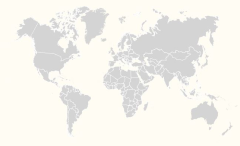Antonio Ligabue was an Italian painter, who became famous in the 1950s of the twentieth century. Animals were the main subject in almost all his paintings. He also made a large number of traditional self-portraits, that strike with their truthfulness and naturalism, and also convey inner emotions.
Background
Antonio Ligabue was the son of Elisabetta Costa and, probably, Bonfiglio Laccabue (the true identity of the father is unknown). In September 1900, he was adopted by a Swiss couple — Johannes Valentin Göbel and Elise Hanselmann. Antonio's mother and three brothers died in 1913 as a result of food poisoning.
Education
Antonio's difficult character forced him to change schools. He studied in St. Gallen, then in Tablat and finally in Marbach, from where he was dismissed in May 1915 due to misconduct.
Career
During the period from January to April 1917, after a violent nervous crisis, Antonio Ligabue was admitted for the first time to a psychiatric hospital in Pfäfers. In 1919, following the complaint by Hanselmann, his foster mother, Ligabue was expelled from Switzerland.
Antonio Ligabue began to paint in 1920. Some time later, in 1928, he met Renato Marino Mazzacurati, who appreciated his artistic capabilities and taught him the use of oil painting. In those years, Ligabue devoted himself to painting and continued to wander aimlessly along the River Po.
In 1937, he was hospitalized in a mental hospital in Reggio Emilia for self-mutilation. In 1941, the sculptor Andrea Mozzali helped him to get out of the psychiatric hospital and welcomed him to his home in Guastalla.
During the World War II, Antonio acted as an interpreter for the German troops.
In 1948, his artistic activity became more intense so that journalists, critics and art dealers became interested in him. In 1957, Severo Boschi, signing Il Resto del Carlino, and the photojournalist Aldo Ferrari visited him at Gualtieri: a report was published in the newspaper with images that are still famous.
In 1961, Ligabue held his first personal exhibition at the La Barcaccia gallery in Rome.
Personality
Antonio was a reserved person, who lived a savage life and was even afraid of people.
During his lifetime, the painter was often called an "Italian Van Gogh" and there was a reason: the painters had similar stylistic characteristics of their work and both of them struggled with mental illnesses, displaying their emotions on canvases.
Quotes from others about the person
"What’s so fascinating about his work is the constant blend of two distinct visions that would ordinarily be considered as contradictory and irreconcilable: visionary intenseness and mannerist decorativism." — Sandro Parmiggiani
"Ligabue managed, as only great painters can, to have twofold emotions cohabit the same work: the firing up of empathy, colors and narrative power, the exasperation of shapes, sweeping all up in a sort of panic whirlwind; and the decorative drive that disseminates and reiterates motifs and patterns as in the coats of animals, in clothes and vegetation, in indoor scenes and outside architectures of castles and buildings." — Sandro Parmiggiani





























